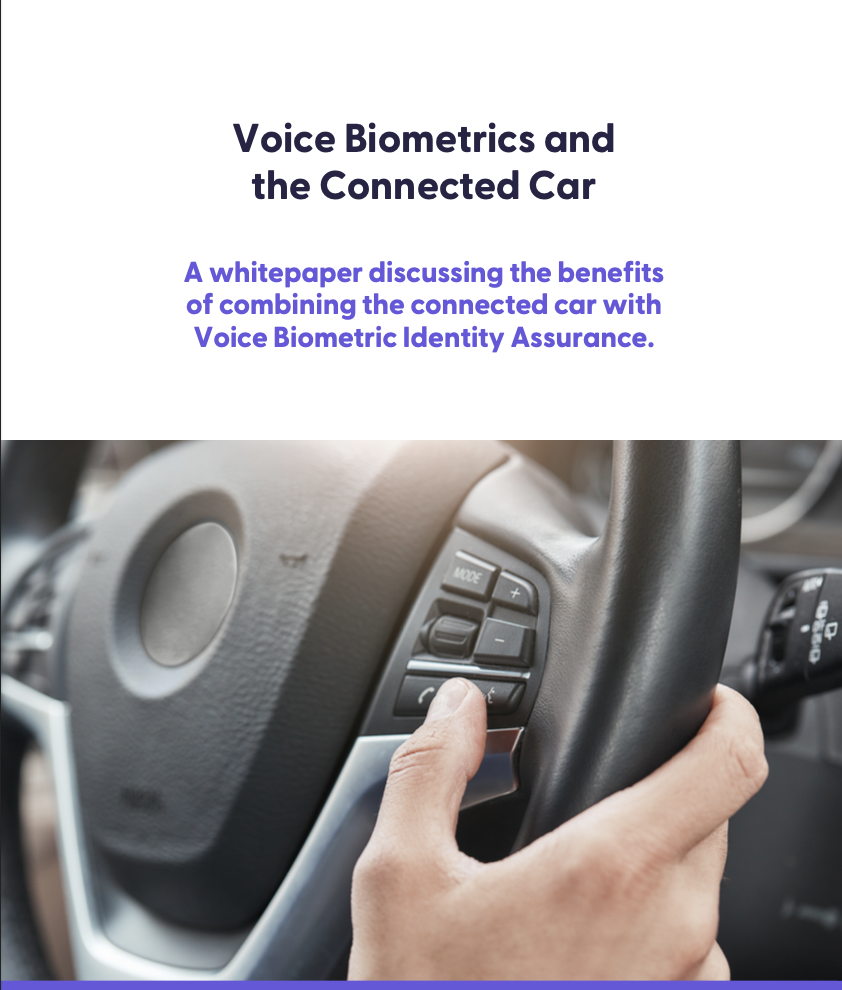Voice Biometrics and the Connected Car
Just as we are now taking for granted speaking to our personal home assistant, which is a connected device within the Internet of Things (IoT), so too are we starting to take for granted speaking to our cars, albeit more modern ones. However, our car is not a truly connected device today, as connectivity occurs in a limited manner only, such as tracking devices if stolen or communicating with the manufacturer for car maintenance and basic support features.
A far greater potential exists for a truly connected car. In a world of unified communications and the Internet of Things, there is no reason why the car of today cannot be transformed into the smart car of the future. The full potential of the smart home and smart business is transitioning to the smart car, and whilst voice is the UI of choice in the home, voice is clear, if not the only, natural UI choice for the smart car. As we are immersed in a world of functionally rich infotainment systems, communications systems, intelligent assistants, artificial intelligence, machine learning, and deep neural networks, it is crucial that driver distractions are eliminated and interactions are simplified. Voice enables this reality.
With such power at our fingertips, and in a mission-critical environment, access and control of key systems is imperative. Security is paramount. Speech recognition systems, as they exist in cars today, do not discriminate on who is issuing the commands. Only speaker recognition, i.e. the ability to know who is issuing the commands using voice biometrics, can determine the identity of the speaker and then the determination can be made in terms of access and control. If someone other than you is driving your car, do you really want them to be able to gain access to your emails and data with a voice command to the car?
Similarly, wouldn’t it be convenient if my car knew all my personal preferences regarding seat position, climate, entertainment, and even digital display layout? If I was the only driver or if I always used the same contactless entry key, no problem. But what if my partner also drives my car and uses the most available key fob?
For a truly connected car, this would make the individual passengers anonymous, and with anonymity comes security concerns and a limitation in the applicable use cases true connectivity can deliver. The problem in these scenarios is that even though my car can understand commands, it doesn’t know who is issuing the command. This is where ValidSoft’s Voice Biometric Identification technology makes these scenarios possible and secure.
Identification means not having to say who you are, not having to carry your personal key fob, not having to have a PIN or any other form of identification the car understands. Simply speaking is sufficient for your car to adjust your seat to your position, load your display preference and allow you to download information that only you are authorized to download. The car seamlessly “understands” who you are.
Implementing cognitive solutions that attempt to analyze the mood or attentiveness of the driver is only useful if it’s the driver being analyzed and not a passenger.
ValidSoft’s biometric identification technology applies voice model clustering techniques and the most advanced voice biometric algorithms available that allow multiple people to be registered to the car, along with all of their own driving preferences, and simply by speaking they are immediately identified to the car. To issue a command such as “read John’s unread emails” would require John, and no one else, to speak the command.
Simplicity is key when it comes to biometric identification. Multiple sensors and scanners are totally unnecessary for ValidSoft’s voice identification solution, as is the need for verbose audio. Short commands to the car’s voice-activated systems, or simply a conversation between occupants is enough for the identification to occur. Where multiple registered persons are present, the speaker separation features can identify the multiple enrollees and determine the driver from positional microphones, or even a prompt for the driver’s name.
A key feature of the ValidSoft solution is that whilst it fully supports the connected car and runs in a connected network infrastructure, providing all the re-use benefits of a network or cloud model, it can also be deployed simultaneously as an on-board component of the vehicle, with immediate fail-over to on-board processing should the car’s external connection be lost. Whilst external data downloads would be temporarily lost, all onboard personalized commands are available.
Of course, for those manufacturers who don’t want a fully connected car model, the onboard processor can work entirely standalone. Just as voice biometrics will expand the scope and reach of the personal home agent, so too will they take the motor vehicle to a new level of usability.
Learn More
ValidSoft is a leading voice biometrics software company with a long history of innovation in voice authentication and biometrics. Our technology is built using active, passive, and continuous voice-based authentication, guaranteeing that the speaker is who they are, always. Our solutions help to eliminate call fraud and identity theft. ValidSoft’s EuroPriSeTM privacy seals ensure 100% compliance with EU GDPR and other leading Data Protection and Data Privacy laws like HIPAA, Digital Identity Guidelines, Vectors of Trust, Federal Identity Program Guidelines, etc. ValidSoft is consistently recognized by third-party analyst firms as a market leader. See how ValidSoft is powering the Future of Identity at www.validsoft.com



